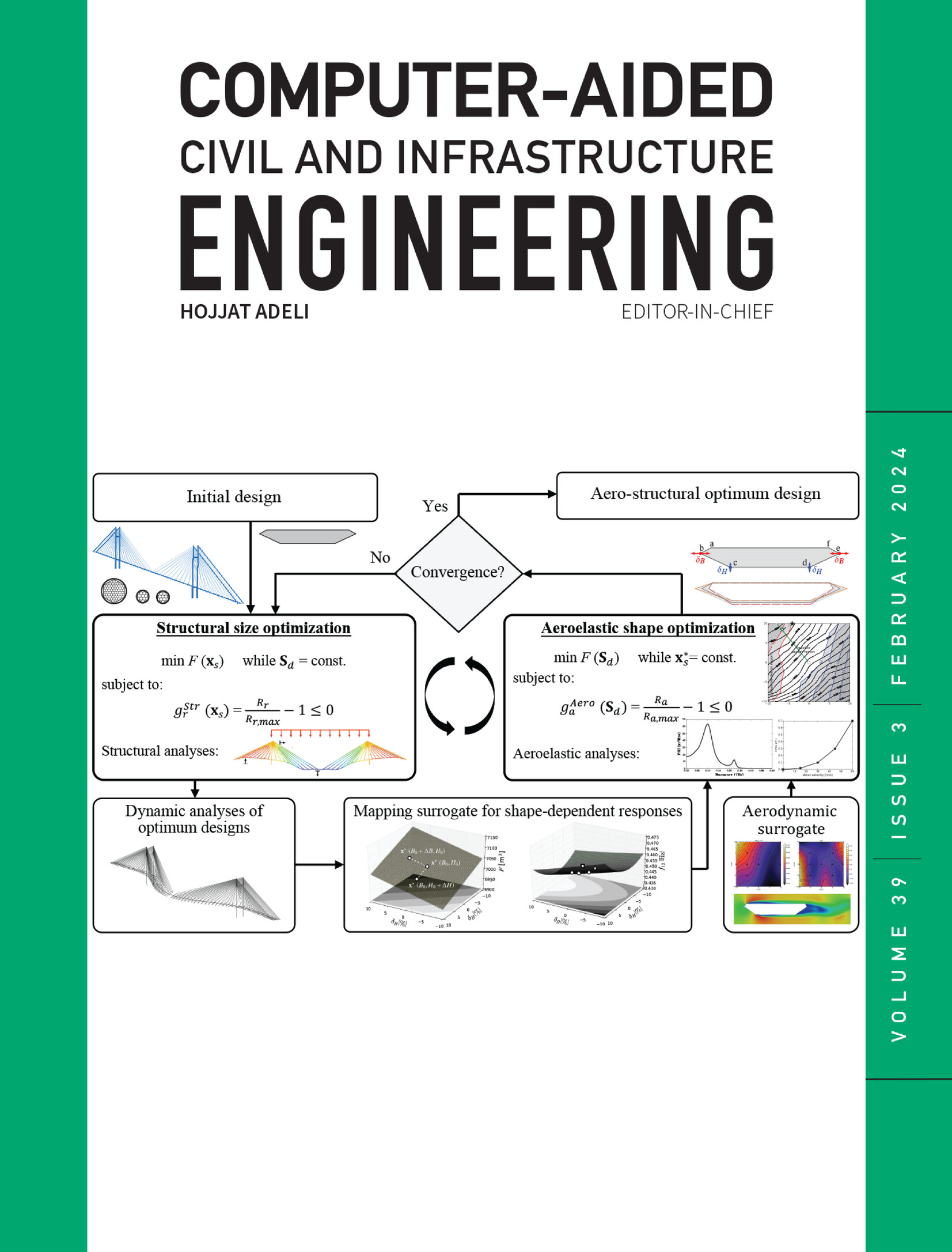高速公路网络一阶可变限速和容量下降的路段流模型
IF 8.5
1区 工程技术
Q1 COMPUTER SCIENCE, INTERDISCIPLINARY APPLICATIONS
引用次数: 0
摘要
一阶基于链路的交通流模型在高速公路网络仿真中具有较高的计算效率。然而,标准的链路传输模型无法再现容量下降(CD)等流量现象。此外,交通控制措施,如可变速度限制(VSLs)控制可能会改变基本图,应纳入交通流模型。本文提出了一种一阶基于路段的车流模型,将VSL和CD结合起来用于高速公路仿真。在本文提出的模型中,每个环节的车辆流具有累积流入和累计流出的特征,而累积流入和累计流出的车辆流受上游边界VSL引起的时变自由流速度的影响。通过将高速公路车道落点处的交通状态相关容量纳入模型,建立了CD模型。然后建立节点模型来确定和调节相邻链路之间的流量传播。在高速公路上进行了仿真实验,以验证该模型的有效性。结果表明,它能够准确地预测VSL和CD下的交通操作,同时保持计算上可处理的流传播表示。本文章由计算机程序翻译,如有差异,请以英文原文为准。
A first-order link-based flow model with variable speed limits and capacity drops for freeway networks
First-order link-based traffic flow models are computationally efficient in simulating freeway networks. However, the standard link transmission models fall short of reproducing traffic phenomena such as capacity drop (CD). Moreover, traffic control measures such as variable speed limits (VSLs) control may change the fundamental diagram and should be captured by traffic flow models. This study proposes a first-order link-based flow model incorporating VSL and CD for freeway simulation. In the proposed model, the vehicle flow through each link is characterized by cumulative inflow and outflow, which are influenced by the time-varying free flow speed caused by the VSL at the link's upstream boundary. CD is modeled by incorporating the traffic state-dependent capacity at the freeway lane-drop positions. A node model is then developed to determine and regulate the flow propagation between adjacent links. Simulation experiments were conducted on freeways to evaluate the model's effectiveness. The results demonstrate its ability to accurately predict traffic operations under VSL and CD while maintaining a computationally tractable representation of flow propagation.
求助全文
通过发布文献求助,成功后即可免费获取论文全文。
去求助
来源期刊
CiteScore
17.60
自引率
19.80%
发文量
146
审稿时长
1 months
期刊介绍:
Computer-Aided Civil and Infrastructure Engineering stands as a scholarly, peer-reviewed archival journal, serving as a vital link between advancements in computer technology and civil and infrastructure engineering. The journal serves as a distinctive platform for the publication of original articles, spotlighting novel computational techniques and inventive applications of computers. Specifically, it concentrates on recent progress in computer and information technologies, fostering the development and application of emerging computing paradigms.
Encompassing a broad scope, the journal addresses bridge, construction, environmental, highway, geotechnical, structural, transportation, and water resources engineering. It extends its reach to the management of infrastructure systems, covering domains such as highways, bridges, pavements, airports, and utilities. The journal delves into areas like artificial intelligence, cognitive modeling, concurrent engineering, database management, distributed computing, evolutionary computing, fuzzy logic, genetic algorithms, geometric modeling, internet-based technologies, knowledge discovery and engineering, machine learning, mobile computing, multimedia technologies, networking, neural network computing, optimization and search, parallel processing, robotics, smart structures, software engineering, virtual reality, and visualization techniques.

 求助内容:
求助内容: 应助结果提醒方式:
应助结果提醒方式:


